Let's take a look at a spectacular hand played in the £1 million buy-in Triton tournament. This only happens in a live game – a 3-way, 4-bet pot 300 big blinds deep! Consider what factors will help us make better decisions in these unique situations.
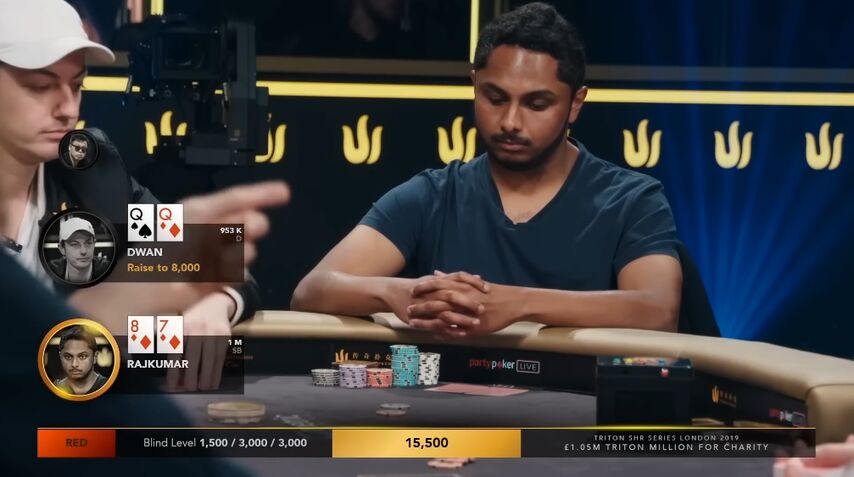
Tom Dwan raises to 8,000 from the button with a pair of queens. Vivek Rajkumar 3-bets big in the small blind to 35,000 with . This is pretty standard action for the pros – suited connectors are usually useful to add to a 3-betting range. In the case of the small blind against the button, we also get a lot of fold equity – the button opens wide and often has to fold to a reraise.
Elton Tsang has in the big blind and 4-bets to 100,000. That's 10% of the starting stack!
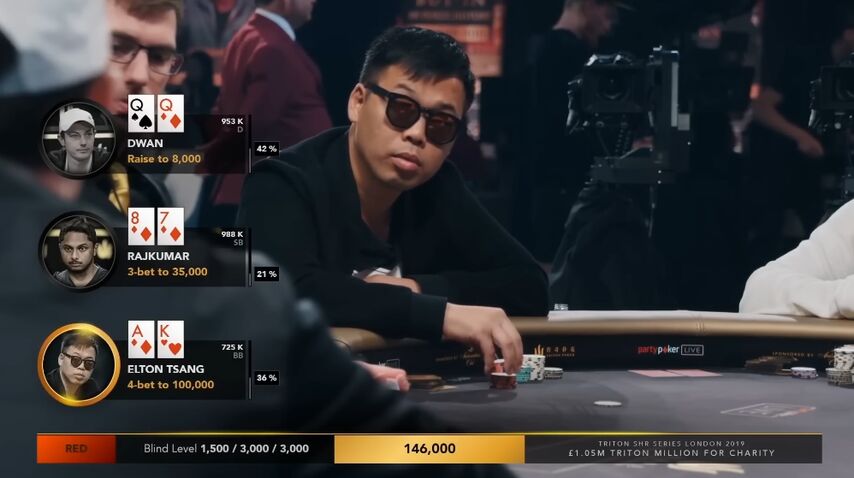
Dwan's hand is at the very top of his range, but at 300bb deep, it's not clear if he needs a 5-bet range at all or if he should just call.
When evaluating a measure of acceptable risk, we must ask ourselves a few general questions: what kind of tournament is this? What is the buy-in? How many days is it? What ROI are we targeting? The answers to these questions determine how we prepare to make these big decisions.
In a weak field like the Main Event of the World Series, I wouldn't 5-bet even with kings in this situation. We supposedly have a big advantage over the field, so the risk is unreasonably high. But in a tight tournament with a small number of participants and the possibility of re-entry, you can consider a more calculated solution.
The Million Pound Freezeout is probably what Tom Dwan thinks is a high ROI tournament, so he just calls with this depth.
Vivek also calls. His hand has straight and flush potential, although he will be playing the hand out of position. I like his call.
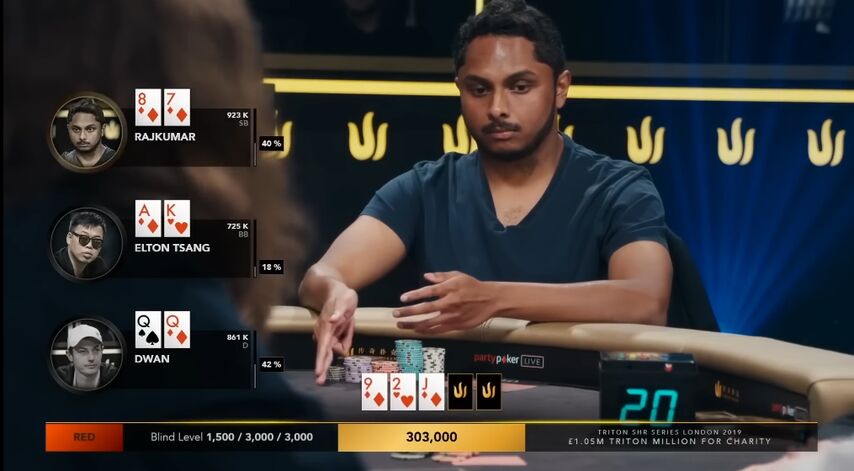
Interesting flop. Vivek flops a flush draw with a gutshot, Elton has two overcards with the nut blocker, and Tom has an overpair. After a check from Vivek, Elton must decide if he wants to continue attacking, even though he missed the flop. Is the ace of diamonds enough for this? At the beginning of the hand, the stacks were about 300 big blinds deep, but now almost a third of the starting stack is in the center of the table...
Elton decides to check and I like it. Villain ranges in a 4-bet pot won't be too wide, and medium cards work well for hands like and .
Dwan and Vivek are strong pros to balance ranges against. If we plan to check AKo often, we also need to check with and .
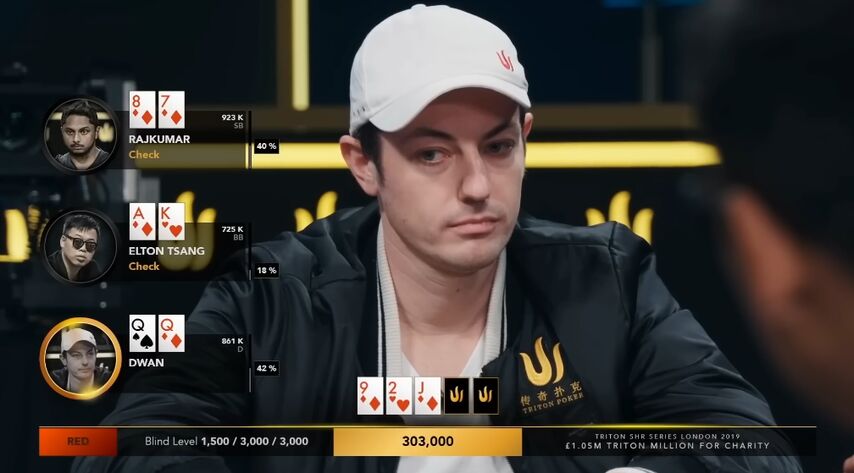
The action goes to Dwan, who has to decide if he's ready to push with an overpair. He has a strong hand, but if he gets action, he may narrow down his opponents' ranges too much and end up far behind. So he checks next.
The more I analyze the situation, the more I like this check – Dwan controls the size of the pot and hides the strength of his overpair while in position.
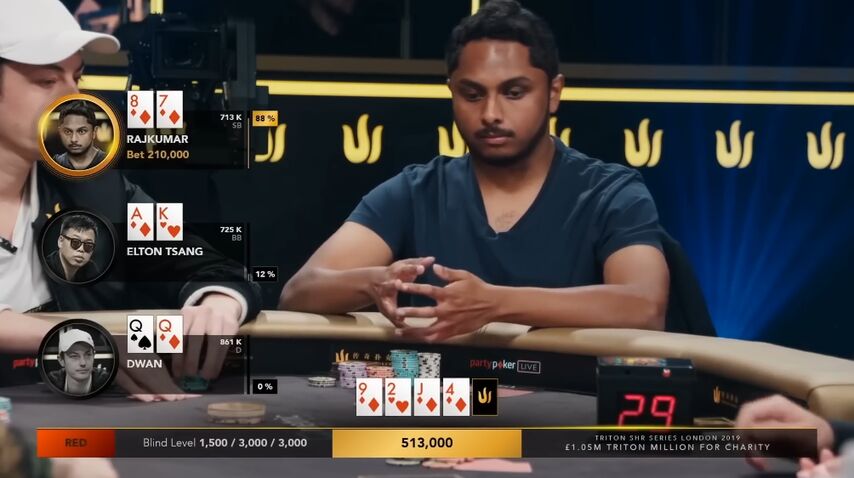
A 4 on the turn made the flush for Vivek who took the lead by firing into two opponents. Pretty straightforward; when there's a lot of money in the pot and you have a strong hand, you don't need to complicate things. I think a lot of players in such a situation begin to get tricky.
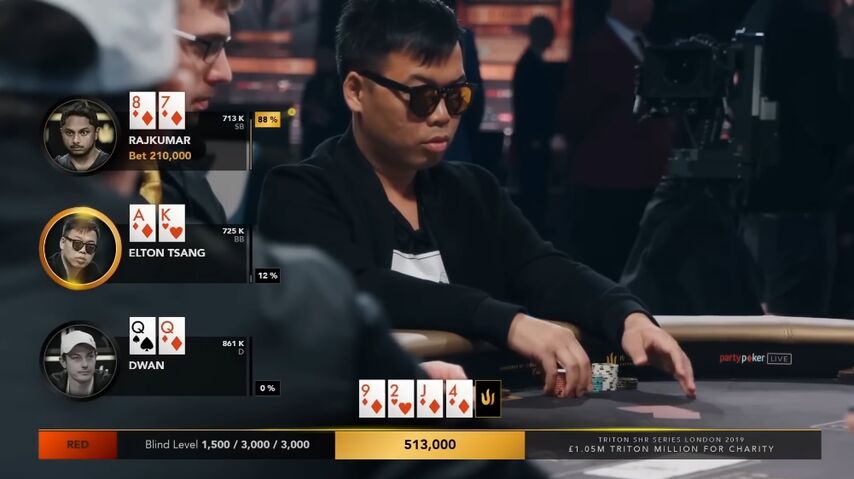
Elton folds his cards unexpectedly quickly. When Vivek 3-bets the small blind against the button and then calls a 4-bet, he rarely does it with offsuit hands. His range contains many suited hands and medium pairs. A 2/3 pot bet into two opponents on the turn is usually flushes and sets. Elton understands that the ace and king are not outs, and calling strictly on a flush is not worth the risk.
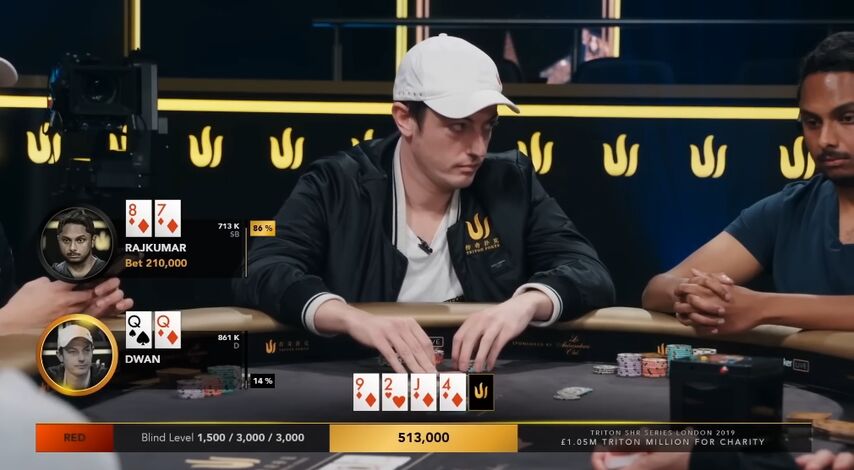
But Tom seems to have no options, especially after we checked the overpair on the flop. Two queens with the diamond is at the very top of his checking range. He calls
The river is an ace and Vivek bets about half the pot.
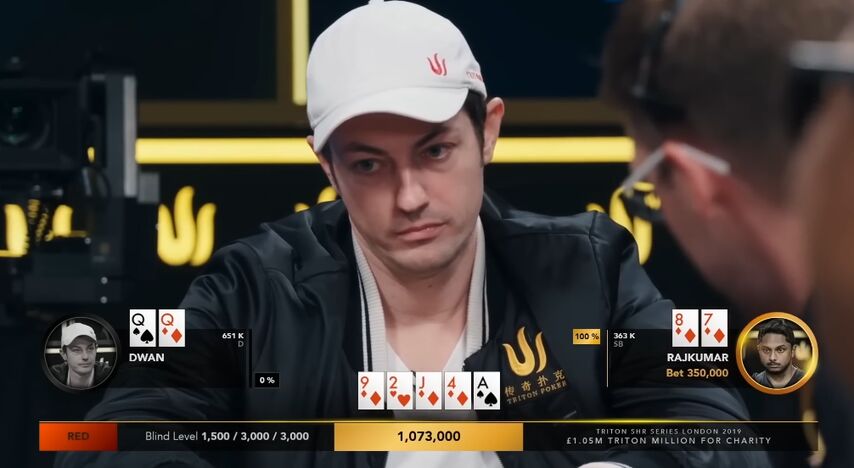
Dwan spends some time thinking, but finds a fold, apparently by the same logic that Elton folded on the turn – there are too many flushes and sets in his opponent's range. If Vivek was bluffing on the turn with or , the ace on the river gave him the boost he needed to win. What bluffs can you come up with? And ? We block the queen, and isn't it too ambitious for Vivek to bluff into two opponents like that?
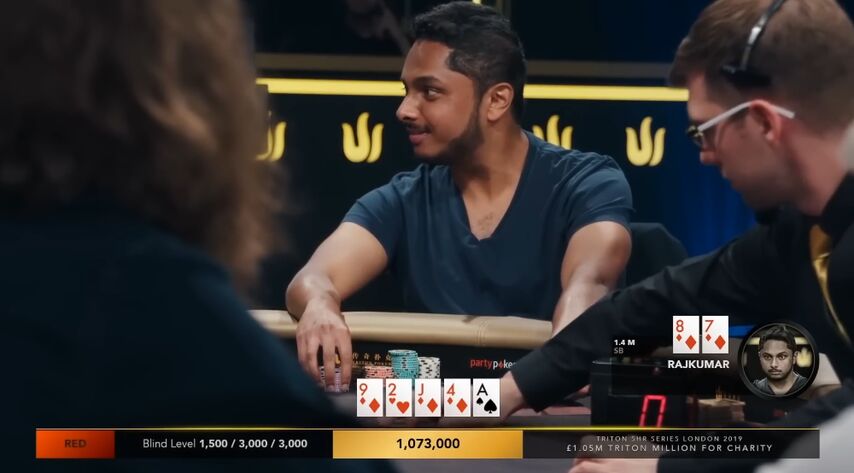
Good fold!
An interesting multiway pot was played on the first day of the $100,000 Triton series tournament.
As we play a hand, we should never forget who's up against us, how well they're playing, and what to do when we don't have a clear answer to these questions.
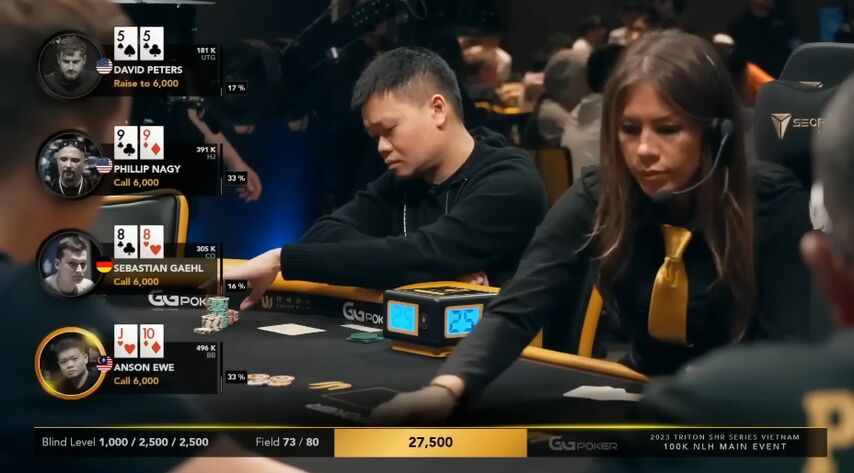
David Peters raises from early position with fives. The stacks are quite deep, around 70-80 blinds. Phillip Nagy, an amateur, and owner of a large poker room, calls the raise.
In the MTT course that Nick Petrangelo and I are releasing in May at Upswing Poker School, I categorize players into five types. Nagy belongs to the fourth type – a recreational player who plays a little looser than necessary. Throughout the course, I regularly explain how we change our decisions depending on the type of opponent in order to get the maximum result.
Sebastian Gaehl calls with a pair of eights and Anson in the BB calls with JTo.
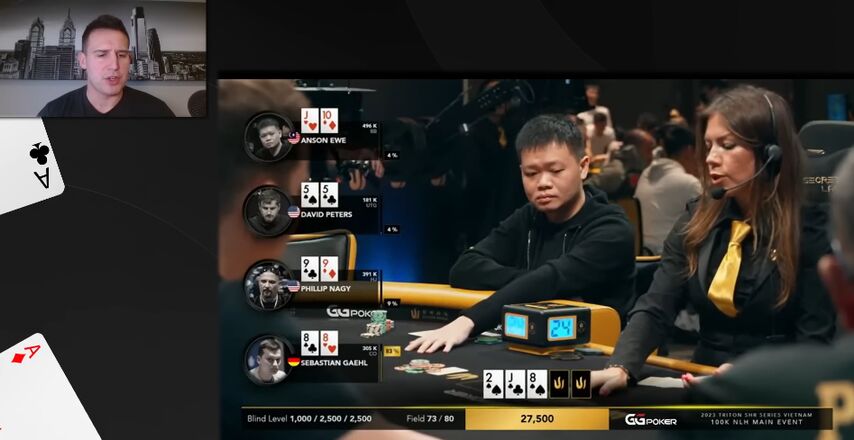
Everyone checks to Gaehl, and he bets 7,000, about a quarter of the pot. This is a pretty standard sizing in multiway pots that we learned from the solver. We use the danger of having multiple opponents in the pot against them so we don't have to bet big to apply pressure.
Anson calls with top pair. Even a quarter of a pot, calling with his hand should be quite frustrating – it's hard to play out of position against three people, and even without obviously good turn cards.
Peters folds. Nagy thinks for a long time and check raises to 35,000!
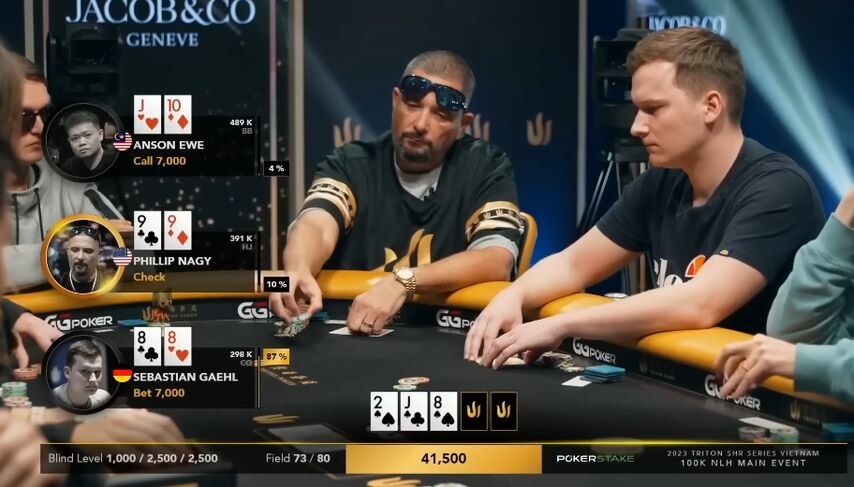
Any solver or strong player will tell you that the right move for Nagy would be to fold. Nevertheless, he decided to raise Sebastian's bet five times.
Sebastian calls. He doesn't have a good alternative.
Anson folds.
Before we continue, let's take a short pause and remember who we're up against. When a player of the fourth type is in the pot, you need to be ready for a completely random action on his part in any situation. I call this the sudden delirium factor. Loose recreational players will always have hands in their ranges that they absolutely can't be put on, such as a pair of nines in this case, even without a spade. If you give a good player 100 attempts to name Nagy's hand that he calls on the hijack and check-raises the flop, is probably not in there.
However, we don't need to know a specific hand. It is enough to remember that there is a whole class of random pointless bluffs in Villain's range. How do we adjust to this? The strategy is very simple: we just don't fold strong hands post-flop. The absolute strength of the hand becomes decisive, and different blockers lose value.
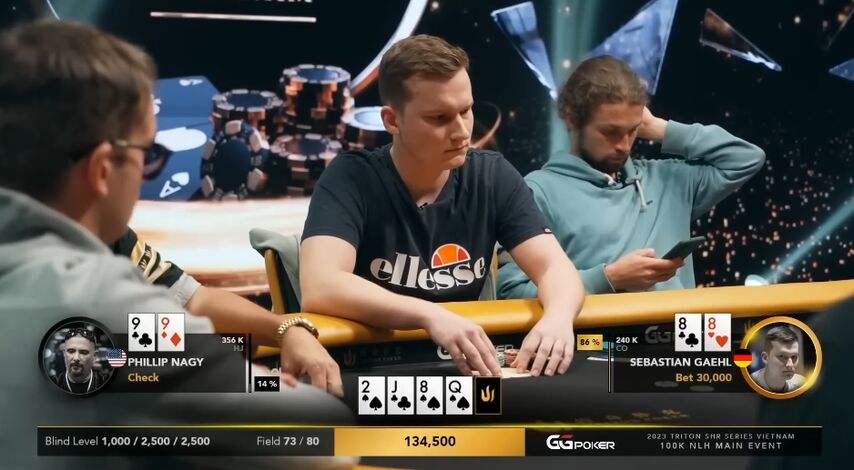
Nagy checks on the turn. The queen that made the straight and flush should not please Sebastian with his set, but his opponent's check seems to surprise him. I see two play options for him. The first option is to check next, controlling the size of the pot, to then call on most rivers or hope for another check on the river. The second option is to bet again and not fold it. This is also quite a good strategy against players of the fourth type.
After some thought, Sebastian bets 30,000, about 30% of the pot. Nagi only has a gutshot, and doesn't even have a flush draw – he could easily have no outs. However, he thinks for a long time, spends one of the extra time cards, and check-raises to 105,000.
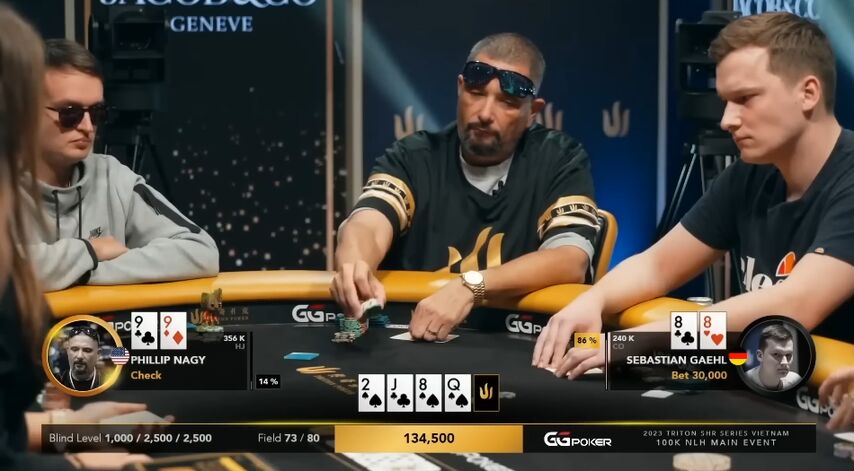
Very creative and aggressive play! And quite typical for loose recreational players – completely random hands will regularly come across in their bluff lines.
How to call this check-raise? If Sebastian calls, the stack-to-pot ratio on the river will be well below 1, closer to 0.5. In essence, we are forced to make a decision on the stack now. You need to understand the situation and choose the more likely of the two scenarios. One, Nagy check-raised with a flush draw, improved to a flush, and decided to trap his opponent with another check-raise in relatively shallow stacks. This is an odd way to play a flush. Scenario two: This is a random bluff. When playing against players of the fourth and fifth types, it must always be kept in mind. (The fifth type are also recreational players, but tighter preflop.)
When weighing the probabilities, we also need to add the absolute strength of our hand to the equation. In this case, we have a set of eights, and I don't think that with such a strong hand we it is right to fold against an amateur like Nagy, who sooner or later will raise some random hand like .
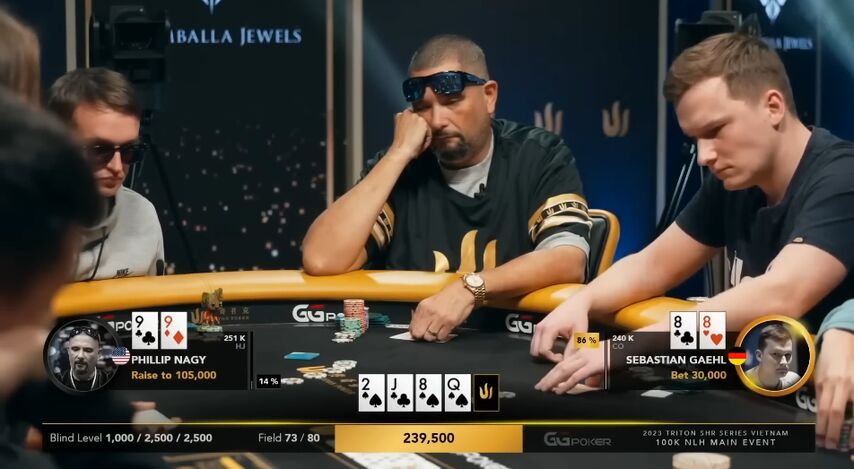
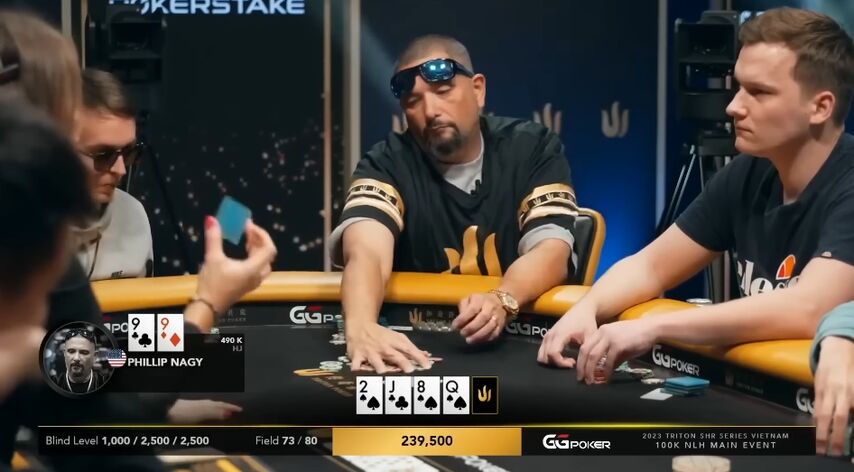
After some thinking, Sebastian threw his cards in the muck. To be honest, I'm not sure the solver would approve of such a fold against an elite player. We can upgrade to a full house, and we can still be best here even if we don't. So I wouldn't fold even against a good reg. And against a player of the fourth type, this is a completely wrong and unacceptable fold. The specific factor of random delirium in the game of these kinds of opponents is too high.
Similar situations often arise in tournaments where we are against amateurs or unknown opponents. They will regularly show hands that are impossible to predict. Therefore, we should not waste time counting the exact number of combinations in the opponent's range, we should not hope that we can reliably determine this range. All we have to do is look at the absolute strength of our hand and add the probability of an expensive bluff to the equation, which doesn't make the slightest bit of sense in terms of poker theory.
All in all, it was a very interesting hand. Let's pay tribute to Nagy for his bold and creative decision! Double check-raises are pretty rare. It was cool!
